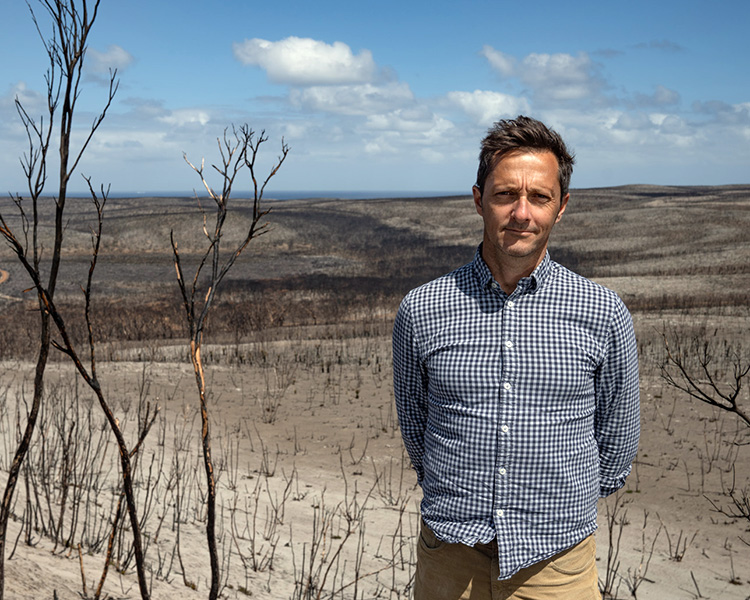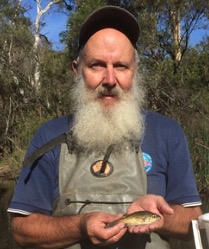
Project: 8.3.6
Collation of summary of 2019–20 bushfire impacts and emergency responses on freshwater fish
Project Leaders: Sarah Legge , Tarmo A. Raadik
Research in Brief
The 2019–20 bushfires were unprecedented in size, burning forested areas between south- east Queensland and Victoria. Many aquatic species were impacted, and multiple agencies were involved in the conservation response. However, the extent of the impact on fish and the experiences of those conducting the conservation responses are yet to be collated. The project aims to collate information on the impact of fires on fish (evidenced by fish kills) and capture what each state/ territory did for the protection of aquatic fauna in response to the fires. The project will explore what worked and what didn’t, and provide suggestions for the future.
Why is the research needed?
Valuable information about what emergency salvage activities were undertaken and people’s experiences during the fire and immediate post- fire period are largely anecdotal, and consequently poorly documented within agencies. Therefore, this data needs to be accessed and compiled urgently before memories fade and the accuracy of the information declines over time or is lost altogether.
How will the research help?
The project will support the capacity of agencies to respond to future fires, and inform the
listing and conservation advices for key species through compiling activities undertaken by the various jurisdictions affected. In doing so, we will assess what was effective and not effective for freshwater fauna.
We will identify and collate existing information on short-term post- bushfire impacts to fish and/or water quality following rain (for such factors as location, timing, severity, extent, species involved). We will also identify and summarise the emergency interventions that were conducted, identifying factors that hindered or helped those interventions.
The project will link closely with NESP Threatened Species Recovery Hub Project 8.3.7, which is assessing species-specific responses and tolerances to nutrient run-off. Findings will be shared between projects and provided to end-users in a way that allows for knowledge to be integrated into assessments of likely species impacts and recovery actions.
The information compiled in the project will be made widely available to Australian Government and state and territory organisations, including details of what worked or did not work, and suggestions for future adoption in fire suppression, water management and immediate post- fire impact activities for aquatic fauna. We will provide recommendations to improve management for aquatic fauna during fires and in the post- fire period.
What research activities are being undertaken?
We will assess the impacts and emergency actions taken for freshwater fish and, where possible, freshwater crayfish and freshwater mussels.
To do this, the project team will collate information from online media sources (news, webpages, Facebook posts, YouTube, etc.). We will also communicate directly with organisations and their staff members involved in natural resource management, conservation, land management and water resources who were involved in post-fire fish rescue or monitoring.
Who is involved?
This project is a partnership between the Arthur Rylah Institute, of the Department of Environment, Land, Water and Planning (Victoria), state government agencies in New South Wales and Queensland, and researchers based in universities and not-for-profits.
Where is the research happening?
The research will be immediately relevant to the jurisdictions impacted by the 2019–20 fires –Queensland, New South Wales, the Australian Capital Territory and Victoria. It will also be relevant to South Australia and Tasmania, although they were not impacted by the recent fires.
When is the research happening?
The project will run for six months in 2021.
Further information
For more information please contact:
Tarmo Raadik - tarmo.raadik@delwp.vic.gov.au
Top image: Davis Creek, upstream of Pipeline Track, Mallacoota – dried and burnt habitat of Mallacoota Burrowing Crayfish, 18 February 2020. Image: Tarmo A. Raadik.




